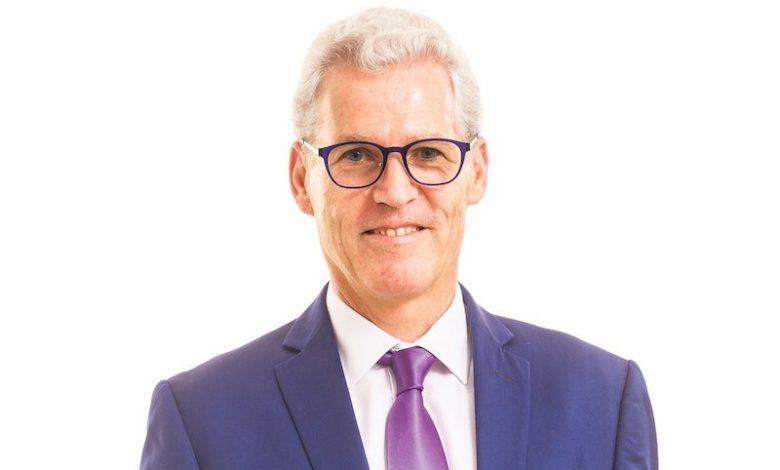Liners blown off schedule by global warming: Jeremy Nixon

Global warming is leading to liner disruption, the CEO of the world’s sixth largest containerline claimed today.
Speaking as keynote at the TOC Asia exhibition, Jeremy Nixon, CEO of Japanese liner Ocean Network Express (ONE), said growing fierce weather patterns are causing delays for ports and ships around the world, principally in Asia where the number and ferocity of typhoons are growing.
“Global warming is happening,” Nixon said, which has led to more adverse weather and more cyclones and typhoons rumbling through key shipping lanes. Last year there were 17 major typhoons in Asia, up from 12 the year before.
“These typhoons track through major shipping lanes in Asia and impact ports too,” Nixon said.
Typhoons in recent years have tracked further north, hitting Shanghai. The world’s largest container port has seen more days closed because of bad weather than before. In August last year, for instance, the port was closed for eight days, compared to just one day in 2017.
“When running at low utilisation ports could catch up relatively quickly but because ports are working at much higher utilisation levels especially in China the ability to recover is harder,” Nixon said.
The heavy weather is not just disrupting supply chains in Asia. Nixon said severe weather had hampered rail operations in North America and Europe had also suffered.
On the markets, Nixon admitted that there was an economic slowdown, but he was adamant it was not a slump. He predicted supply/demand to tighten in 2019.
Volumes for January and February had been “quite flat”, with Australia especially poor, while one of the growth areas had been Vietnam.
Nixon said he was confident of a close soon of the US-China trade war, noting how the spat had exacerbated the equipment imbalance on the transpacific where one in two boxes leaving the US back to Asia is now empty. The ONE executive revealed that worldwide his company spends close to a billion dollars repositioning equipment.
Another growing supply chain headache for liners, Nixon said, are with terminals across the world that have struggled to keep up with the supersizing of boxships.
“The speed at which they’re adding terminal capacity globally is not keeping up, especially in Europe and America and even in Asia,” Nixon said.
On the land side, the ONE boss said rail terminals had been slow to develop and trucking availability and high costs are a constant problem.
The latest data from February published by SeaIntel shows ONE is ranked ninth among the top 15 liners for schedule reliability.
TOC Asia is one of more than 50 events taking place during Singapore Maritime Week. Splash will be bringing readers reports from across the Lion Republic all week.

“Global warming is happening … Last year there were 17 major typhoons in Asia, up from 12 the year before.”
Excuse me, but there’s nothing unusual about 17 major typhoons in one year. According to “2018 – NW Pacific Typhoons”, a publication of the European Commission dated 7 August 2018, the AVERAGE number of tropical typhoons in the western Pacific is 16.5 annually. The largest number recorded was 26 typhoons in 1964, and the smallest was 5 in 1999. People who ring the alarm bell over a phenomenon that naturally fluctuates should study history. But of course, they may have their own agenda, like making excuses for their poor performance, perhaps?
Global warming is happening. There are now a Century’s worth of temperature measurements from some places showing rising averages and contracting diurnal ranges, with some places like the Arctic showing very rapid and significant warming, where the observed changes are pretty well in conformity with science that has been developed since Eunice Foote’s first crude experiments in the mid 19th Century, which first showed the propensity for CO2 to act as Greenhouse gas before Callender. The interesting point is the move north of the perceived tracks, which may reflect the measured expansion of tropical climate conditions.
#YAWN…STILL YAWNING